Fork & Shovel
FORKS
Functions of a Digging Fork: What Are They in Gardens?
Your collection of gardening tools tends to increase as you gain experience. Typically, we all start off with the essentials: pruners, a trowel for little projects, and a spade for big ones. Even while you could definitely get by with just these three items, they aren’t always the best gardening equipment. Have you ever used a garden spade to dig in rocky or very compacted clay soil, for instance? Back-breaking job is possible. For a task like this, using a digging fork can significantly lessen the stress on your body and instruments. Learn more about using digging forks in gardening projects by reading on.
How a Digging Fork Works
Garden forks come in a few distinct varieties. Each type is designed to serve a certain function. The standard garden fork, also known as the compost fork, is a large fork with four to eight tines that are curved horizontally and slightly upward at the bottom. Compost, mulch, or soil are typically moved with the help of these forks. The curved tines make it easier to turn and mix compost piles as well as scoop up big piles of mulch or compost to scatter in the garden. This kind of fork resembles a pitchfork more closely.
A fork with four to six flat, straight tines is referred to as a “digging fork.” A digging fork is used for digging, as the name implies. When digging in a compacted, clay, or rocky ground, a digging fork is the best instrument to use as opposed to a pitch fork or compost fork.
The digging fork’s powerful tines can cut through tough soils that a spade could struggle with. Before using a spade, the area can be prepared with the digging fork by simply loosening it up. Using a digging fork will ease the strain on your body in either case.
Naturally, you need a robust, well-built digging fork if you’re utilizing it for difficult tasks like this. The finest solution is always a digging fork made of steel. In order to make the tool lighter, the shaft and handles are typically constructed of fiberglass or wood, while the actual tines and fork portion is made of steel. Although they are heavier, the shafts and handles of digging forks can also be made of steel. Digging fork handles can be D-shaped, T-shaped, or simply a long shaft with no particular handle. Digging fork shafts also exist in a variety of lengths.
The right tool should be chosen depending on your body shape and what feels most comfortable to you, just like with any other tool. For instance, utilizing a digging fork with a shorter handle will be simpler if you are short. A longer shaft will also ease the strain on your back if you are tall.
What Purpose Does a Gardening Digging Fork Serve?
Additionally, digging forks are employed to remove plants with robust, hardy root systems. These could be weedy patches or garden plants that you want to divide or transplant. Digging fork tines can pull out more roots than a spade can because they can damage root structures less.
This lessens the stress of transplanting for garden plants. This will enable you to completely remove the weeds’ roots and prevent their regrowth. You can use a spade in addition to a digging fork to dig up plants by first loosening the soil around the plants and roots with the fork before finishing the job with the shovel. Alternately, you could do the task entirely with a digging fork. You will decide which approach is the simplest.
How To Use A Garden Fork: How To Use A Garden Fork
A gardening fork is what? One of the most essential items to have in the garden, along with a shovel, rake, and set of shears, is a gardening fork. There are large forks for upright work and small forks for more intricate, low-to-the-ground jobs available.
Types of Gardening Forks
The garden fork, digging fork (also
known as a spading fork), and border fork are the first forks used for digging
or aerating soil.
Garden fork – The largest of these, the garden fork, is useful for bigger spaces. A garden fork should be used when? These robust tools are excellent for more demanding activities like preparing new soil for a garden or breaking up stubborn soil. Double digging and soil aeration are two other uses for garden forks. If your soil is compacted or heavy with clay, they are extremely helpful.
Digging fork – The digging fork, also known as the spading fork, is a relative of the garden fork and is employed for root vegetable harvesting as well as for digging or turning over lighter soil types. Digging forks often have four tines, just like garden forks do.
Border fork – The border fork is a scaled-down version of the garden fork, making it suitable for both tiny individuals and areas. If you have a tiny garden where a larger fork would be excessive, you should buy a boundary fork. Additionally, they come in handy for borders, raised beds, and other confined spaces where a larger fork might not fit.
Then there are pitchforks, which are forks with sharp tines used to move or turn over things like hay, straw, compost, or manure. Among other things, farmers use them to move little bales of hay and change the bedding in livestock stalls.
Two, three, four, or more tines can be found on pitchforks. The tines are typically bent upwards, unlike garden forks, to increase scooping capacity. Pitchforks of the following varieties are typical in gardens:
Compost fork – A compost fork is a special type of pitchfork with extremely sharp tines that is used to cut into compost. When turning over the compost pile, it is now simpler to grab and raise the compost.
Potato fork – A specialized fork called a “potato fork” allows harvesting potatoes quicker and more effective. These range in size and typically have blunt tips so as not to harm the potatoes.
Use the forks listed above while standing straight up. When you need to work close to the ground, hand forks are the ideal tool. These little forks can be used for smaller, more precise operations and are grasped in one hand.
How to Buy a Gardening Fork
Because weakly produced forks can bend with usage, pick one that is made with quality materials. Tools that have been forged are more durable than those assembled from various parts. With hard clay or compacted soil, using a well-made instrument will make using a garden fork much simpler. Because you won’t need to replace it every few years, a quality tool will also enable you to save money over time.
SHOVELS
What Purposes Do Shovels and Digging Tools Serve?
A digging shovel is the type of shovel most frequently used in gardening. This tool, which has a sharpened steel edge for easier digging, is frequently offered with longer handles that do not need bending or kneeling, or with D-handles, which are an alternative to straight handles and maintain your wrist in a more neutral position to lessen strain.
While transfer shovels have a heavy-duty, steel head for moving and spreading mulch, gravel, and other garden materials, drain spades are ideal for trenching, digging up bulbs, cutting roots, and more. For moving enormous amounts of mulch, grain, seeds, and other materials, Scoop Shovels have massive, secure heads, while Tampers have a sturdy, 8 in. x 8 in. aim to swiftly and evenly compress dirt, gravel, and stone into a flat surface. Our steel posthole diggers’ offset handles make it simpler to dig deep postholes, and our long-handled steel edger makes it less difficult to edge around sidewalks, gardens, and other obstructions. The Garden Spade Shovel has a sharper edge than the Transfer Shovel, making it great for edging, cutting trenches, and slicing through thick turf. Transplanting Spades are best for digging up bulbs or small, deep holes.
What Shovel Do You Need For Gardening? When Choosing Shovels For Gardens
It’s crucial to select and employ shovels properly in the yard. You’ll be able to work more productively and prevent accidents if you choose the appropriate sort of shovel for the task. Additionally, it will produce better outcomes for your garden.
The Functions of Shovels
Confusion might result from the overwhelming selection of shovels found in hardware and gardening stores. Fortunately, there are a few basic sorts of garden shovels that each have a specific purpose. This article will help you find the solution to your query about what shovel you need for gardening.
Knowing the components of a shovel is useful before learning about the typical varieties of garden shovels. The grip is found at the top, followed by the handle, which comes in different lengths depending on whether you’re digging deep holes or doing precision work. The collar, which is where the blade is attached to the handle, comes next.
The blade, which is normally composed of metal but can occasionally be plastic, is at the bottom. The step is the name for the flat area at the top of the blade. Instead of using just your arms, the step enables you to press the shovel into the ground using your foot and body weight. Depending on the type of shovel, the blade and tip, also known as the point, can have various shapes.
Let’s now examine common garden shovels and their applications.
Garden shovel types
Round point shovel: This style of shovel has a sturdy blade and a tip that makes it easier to cut into the dirt. It is practical for excavating projects.
Square point shovel: This shovel is handy for moving and lifting objects. When working on landscaping tasks, the square point can also be utilized to smooth up the dirt.
Trenching or irrigation shovel: This shovel’s square, narrow blade makes it ideal for digging large holes without upsetting neighboring plants. It can be used to dig irrigation trenches, as the name implies, or to transplant or remove specific plants.
The trenching shovel’s relative, the drain spade, has a narrow blade with a rounded tip. It works well for clearing out trenches and excavating small holes for planting flowers or bushes.
Scoop shovel: This series of shovels is designed for lifting and moving items, with broad, concave blades and flat tips. An illustration is a snow shovel. Other scoop shovels are designed for moving mulch or other landscaping supplies.
Scraper: These shovels have flat tips and short blades. They can be used in place of an edger to get rid of weeds and tidy up the lawn’s edge.
Trowel: This is a one-handed, tiny shovel. The trowel’s thin blade with a pointed tip makes it helpful for repotting, transplanting seedlings or miniature flowers, and other precision chores.
Garden shovel: The blade of this multipurpose tool is rounded, and the tip is somewhat pointed. It is helpful for a variety of gardening jobs, including lifting, digging, and transplanting.
Choosing Garden Shovels
You may now select the appropriate shovel type for your work based on the information above, which will make using shovels in the garden much simpler.
- When digging, use a trowel for smaller, more precise jobs and a round point shovel for bigger jobs.
- For removing plants with deep roots, excavating irrigation trenches, or digging small holes for transplants, use a trenching shovel or drain shovel.
- Depending on the nature and weight of the material, choose a square point shovel or a scoop shovel for lifting and moving.
- Use an edger or scraper to remove weeds.
- Garden shovels and trowels are handy all-around tools for various gardening activities.
How to Use a Round Head Shovel in the Garden: Using Round Point Shovels
A great landscape begins with the right gardening tools. Each has a particular function and a layout that maximizes its usefulness. One of the instruments that is most frequently used when creating a garden is a round head shovel. What is the purpose of a round point shovel? This instrument’s primary function is digging, and it excels in that capacity. The right rounded shovel can improve your ability to dig while also having ergonomic design features that will benefit your back and simplify the task.
Concerning the Round Head Shovel
Gardeners are aware that the proper instrument, when used properly, can guarantee success on any activity. We value our instruments just as highly as a chef does his or her knife. Beyond digging and scooping, round point shovel uses include trenching, transplanting, moving mulch or compost, among many other things. Maintaining the tool’s edges sharp and keeping it clean and dry will increase its lifespan.
Typically, rounded shovels have a beveled edge to aid in breaking through difficult soil conditions. They might also have something to drive into the ground. Curved corners make it easier to scoop. Handles can be ergonomically inclined and are the height at which most people stand. Blisters are frequently avoided by cushioning grips.
Any big box shop or garden center should have these specialist tools in stock. The selection of a durable one is crucial. Large-scale jobs frequently result in the breakage of wooden-handled instruments. It is important to properly weld the scoop’s connection to the handle. Round point shovels are a workhorse of the garden since they are one of the most widely used tools and can be used for a variety of activities. These chores will get slightly easier with good manufacturing and construction.
What Purpose Does a Round Point Shovel Serve?
Shovels with rounded edges resemble Ginsu knives. They can cut, dig, scoop, lift, and chop through tough dirt, however they can’t slice, dice, or julienne. Any gardener can use these tools to their advantage.
To ensure the tool lasts a long time, it must be maintained. Before storing the shovel, always wash it and let it air dry. This avoids rust, which eventually destroys the metal. Bring out the shovel in the spring and sharpen the edge with a portable file or whetstone. That will make it much easier to penetrate hard soil. If handles are made of wood, keep them dry and periodically smooth them to eliminate any splinters. Linseed oil should be applied to protect the wood.
Depending on the task, a round-headed shovel should be used in the garden. A rounded shovel can be used for almost any digging or cultivating task in the landscape. You can use round point shovels as a scoop by using them to transfer materials like mulch, compost, gravel, and more. With these shovels, cultivating or turning the vegetable bed is simple and efficient.
The uses of a round point shovel don’t end there. Rounded shovels can be used to dig trenches without a trencher and to tidy up the edges of holes and ditches. No matter how you choose to dig with your shovel, always keep the blade at an angle. This reduces tension and makes dirt cuts easier. To avoid injury, remember to raise with your knees rather than your back.
How To Use A Long Handled Shovel In The Garden: Long Handled Shovel Uses
What is a long-handled shovel going to do for you when tools are designed to make gardening easier? The reply is “a lot”. Long-handled shovels have a variety of purposes, and your back and garden will appreciate it. A long-handled shovel is what? When should long-handled shovels be used? Continue reading if you’re unsure of your position in the long-vs.-short-handled shovel argument.
What is a Long Handled Shovel?
Shovels are equipment used for lifting and excavating. Shovels are used to turn over a flower bed and incorporate compost into the soil. A shovel with a long handle—up to 48 inches—is referred to as a long-handled shovel (122 cm.). The tip of the shovel handle typically lacks any kind of metal grip.
When a long-handled shovel is placed next to a short-handled shovel against a wall, it is the simplest to identify. Shorter handles that commonly finish in “D-grips” are a common feature on hefty short-handled shovels.
When to Use Long Handled Shovels
How can you choose between long- and short-handled shovels, though? When should you use a long-handled shovel? Long-handled shovels have a wide range of applications in the garden. In fact, according to many professionals, long-handled shovels are superior for practically all tasks. Typically, long-handled shovels are lighter. They enable you to stand up straighter and stoop less frequently.
To do digging operations in confined areas, such as coal mines or battle trenches, short-handled shovels were created. In contrast, if you are really short, you might want to use a shovel with a short handle since you will find it simpler to control.
Long-handled shovel uses
If you’re wondering when to utilize long-handled shovels especially, they work better for digging holes and planting trees. Long shovel handles have the ability to dig down far. Additionally, you’ll gain more leverage, which is excellent for your back.
Digging compost from a compost pile is another fantastic use for your long-handled shovel. Also useful for hauling mulch
Choose a lightweight long-handled shovel when making your selection. According to experts, weight is the most crucial factor for comfort of use when it comes to long-handled shovels. You will find digging to be easier the lighter the shovel.
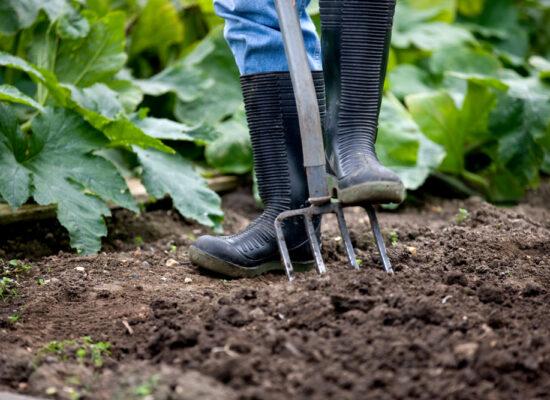
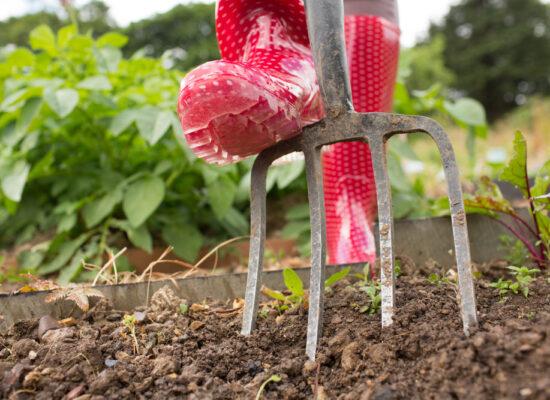
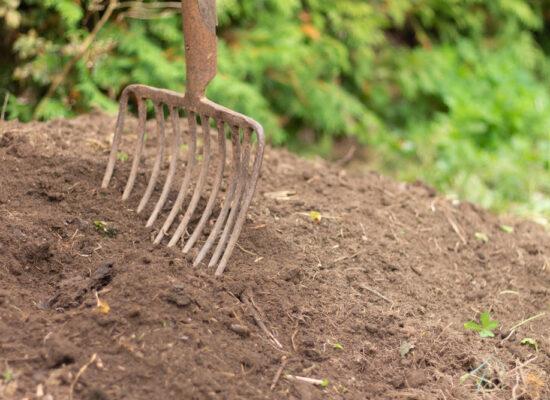
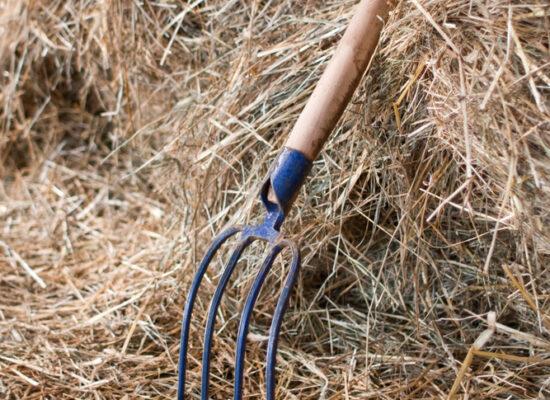
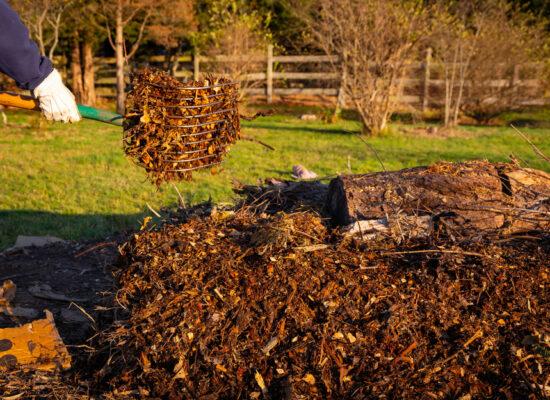
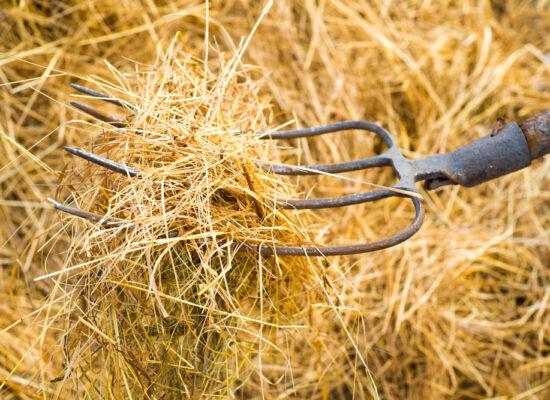
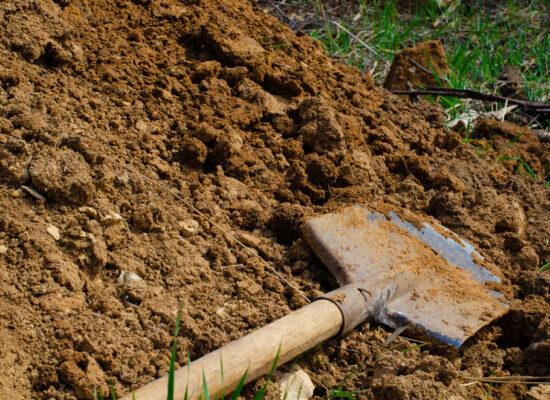
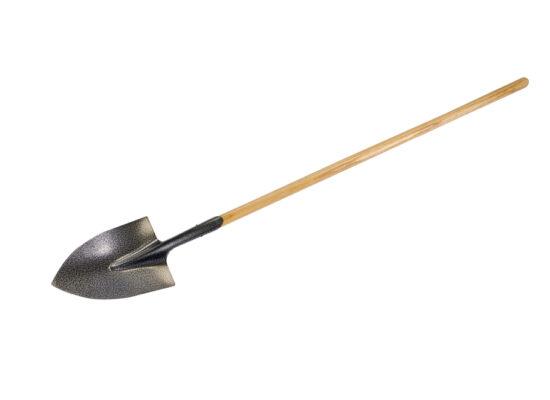
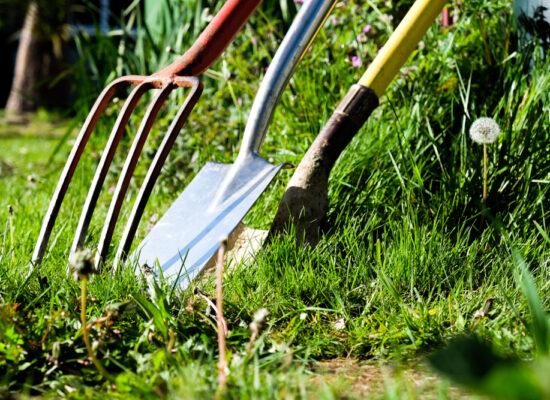
© Arbemu. All rights reserved